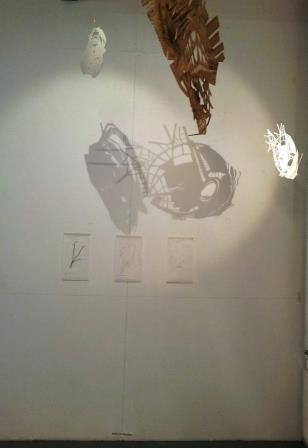Diploma 2014: "SELF CITY NATION" by Shreya Nagrath
Exploring the mutually reciprocal relationship between a human being and a city
the intention: Exploring the mutually reciprocal relationship between a human being and a city to decipher the role of an architect.
the tool: Retrospective Personal Geographic Mapping
Just about the time that I was born, India was on its way to economic liberalization, from a socialist system towards capitalism. Major economic reforms took place in 1991, opening the markets to foreign investment. The post reform period has also had one major shift i.e. India transcending from being a purely production agent for export economy to an active consumer of its produce. Higher wages and increased consumption followed with rampant commodification of all the basic needs. food, clothing and alas shelter.
In keeping with my opportune year of birth I have realized that the maturing of Mumbai into a global city was always appropriated to me becoming a glocal/ global citizen. The evolving media exposure and strategies, technologies and amenities introduced at specific times were in keeping with my levels of maturity.
This sense led me to launch into an exercise of retrospective personal pyschogeographic mapping of the last 26years. I began to record my recollections in terms of short autobiographical stories. The linear nature of a timeline was used to divide the span into three phases. The divisions addressed change in physical scale as a body and scale of experience. The division also facilitated the drawing of subjective assemblages from the recollections with specific references to architectural elements in the city. From the emergent themes came deeper investigations into the nature of architectural practice ; its products and the role of the architect. The recollections are windows into my understanding of larger issues existing in the city impressions of which imprint on each other. These often form generalizations and expectations of and from a city and a system. . I wonder if as an architect I am in a position to poke/ question a formulated understanding of an existing system. I understand that a system cannot be changed single-handedly but I intended to poke and possibly provoke.
Plurality of the city explored through one single story; mine. but i am not a representative; i am an individual, in a collection. and that is precisely what Mumbai is, a collection. I am using the examples of the train, the toilet duct, the abandoned mills, the zoo to discuss issues of visibility, equality, development methodology, and ambiguous terminology which affect the expectations formed in the minds of individuals from the city.
The state government in Mumbai especially projects development as key to the survival of the city. More housing and more efficient transport infrastructure. Political and economic will has been poured into this agenda. The government always uses non-governmental/private agents/experts for the execution of these plans. Also in some cases(like slum rehabilitation/ low income housing)where the profit margins are far lower than the competitive real estate market, these agents are given incentives(allowed to build more and keep a percentage of the built area , relaxed building laws)However the rules laid out in the books and zone sin the development plans tend to be viewed as a system of loopholes by the developers. Manipulation is a key tool to arrive at the best deal. This has lead to an elitist development within the city encouraging of a certain variety of real estate not relatable to everyone.
The large mill lands which once catered to a large section of migrant population are being re appropriated for someone other than its previous users. Even as publically accessible, by introduction of certain functions this public space has been commodified and a class factor has been introduced t its usage. thus denying them access.
Thus section of the population are being denied access to public recreational space and housing and other services like sewage treatment and water which come with land when they are being squeezed by reduced access.
The trains and the buses remain the single affordable entity in the city. so u can move around and access food but there is no place to be. no permanence. constantly travelling without a goal of getting to a destination.
I don't want to answer these questions .I want to unveil the stake holders and negotiate the architects role in the mould.. make holes in the mould.
All photos: Shreya Nagrath

Retrospective Psycho-geographic Mapping :Tracing lived geographies to understand and uncover patterns of growth

Hidden Inside boxes: Using informal spatial expansion as a way to discuss the developers' methodology

Exhibition Overview

Drawing Connections

Overlays

Concluding Questions
